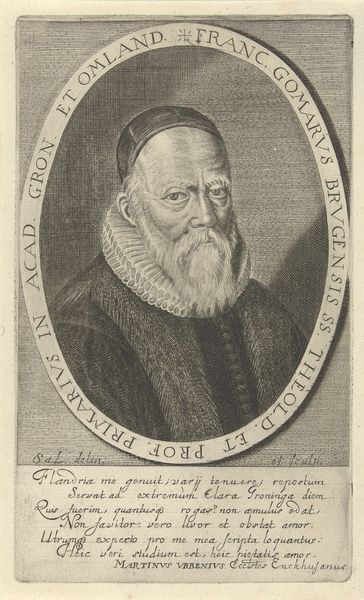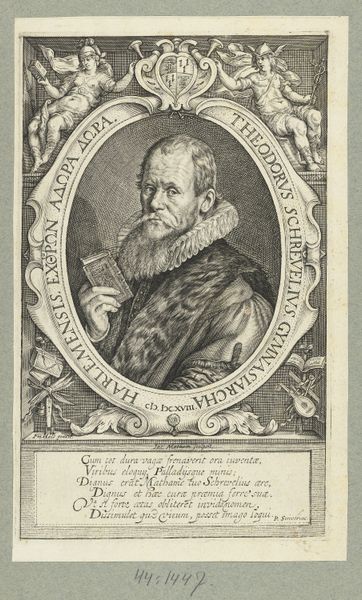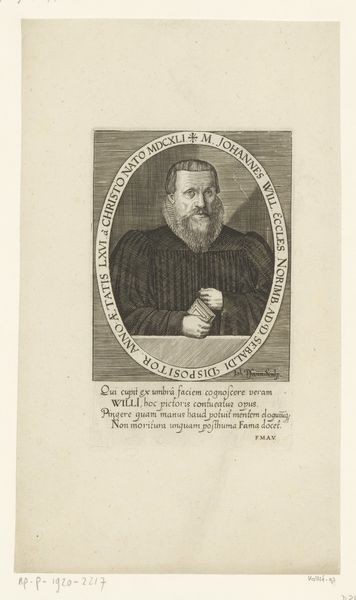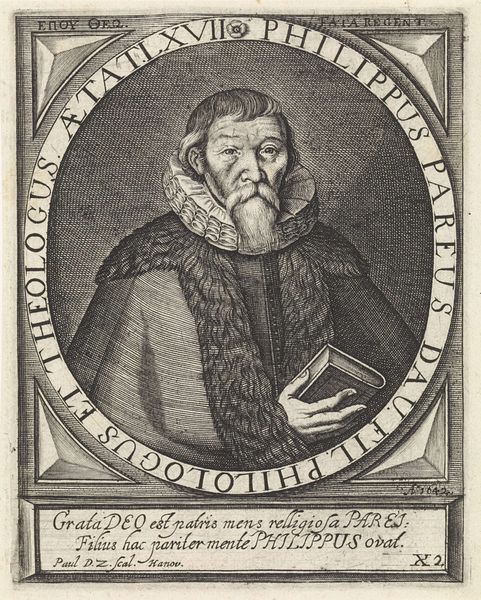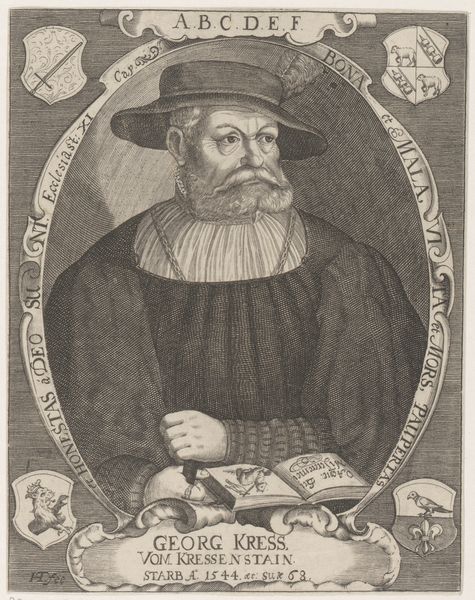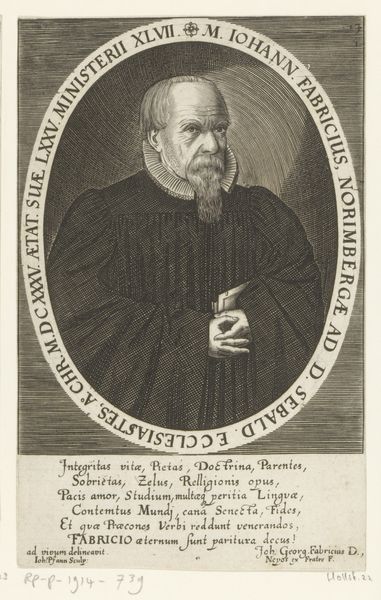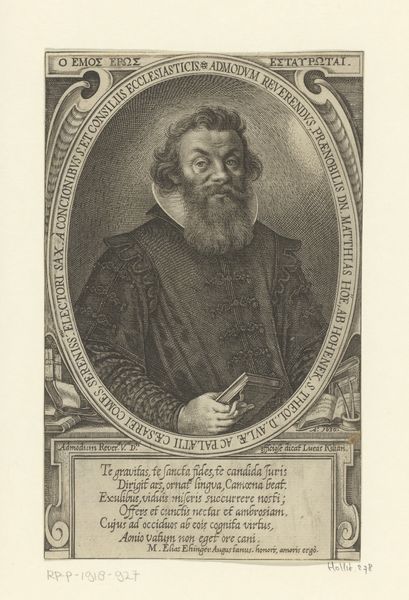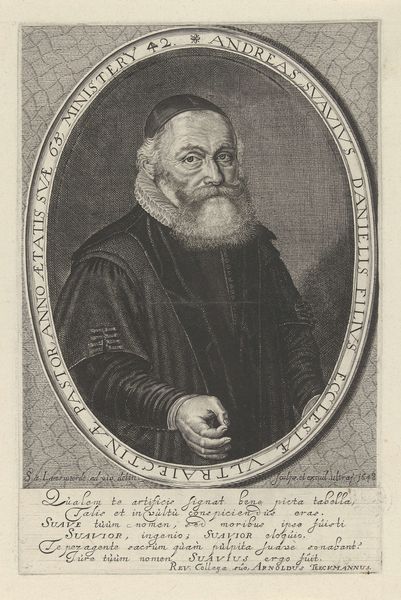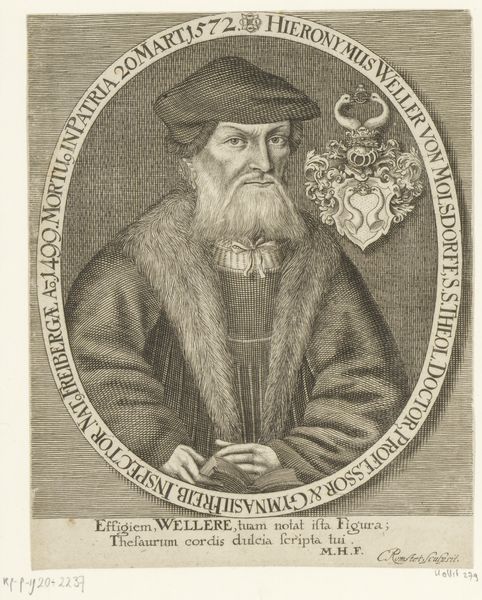
print, paper, ink, engraving
#
portrait
#
aged paper
#
baroque
# print
#
book
#
old engraving style
#
paper
#
portrait reference
#
ink
#
geometric
#
history-painting
#
engraving
Dimensions: height 180 mm, width 113 mm
Copyright: Rijks Museum: Open Domain
This is Johann Pfann’s “Portret van Georg Faber,” an engraving from 1633. The tightly rendered lines create a somber mood. Faber is encased in an oval frame, emphasizing the controlled nature of the piece. Notice the stark contrast between the dark areas of the subject's robe and the light reflecting off his beard and collar. Pfann skillfully manipulates light to draw our eye to Faber's face, a common technique to highlight the sitter’s character. Consider how the rose and book held by Faber function as signs within the semiotic structure of the portrait. The rose, often a symbol of love or beauty, contrasts with the book, representing knowledge and intellect. This tension is not merely aesthetic; it challenges fixed categories. Does Faber embody a fusion of scholarly pursuit and worldly appreciation, or does Pfann suggest a conflict between these realms? The engraving, with its controlled lines and deliberate contrasts, functions as a site of cultural discourse, where the representation of the individual intersects with broader philosophical considerations about the nature of knowledge, beauty, and identity.
Comments
No comments
Be the first to comment and join the conversation on the ultimate creative platform.




